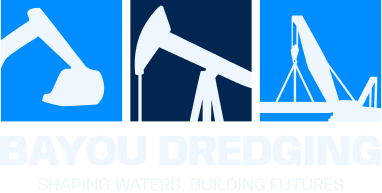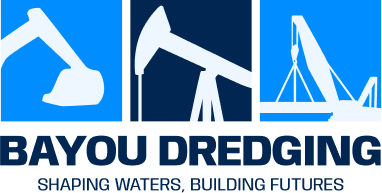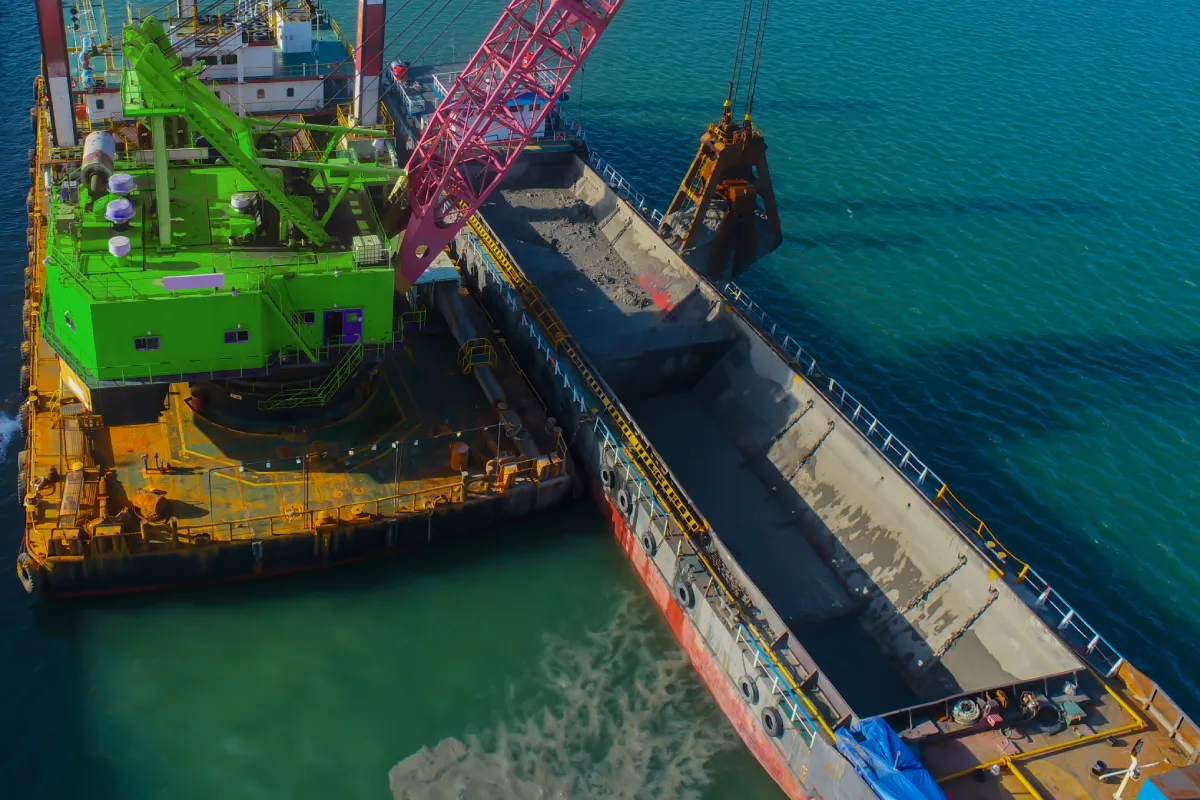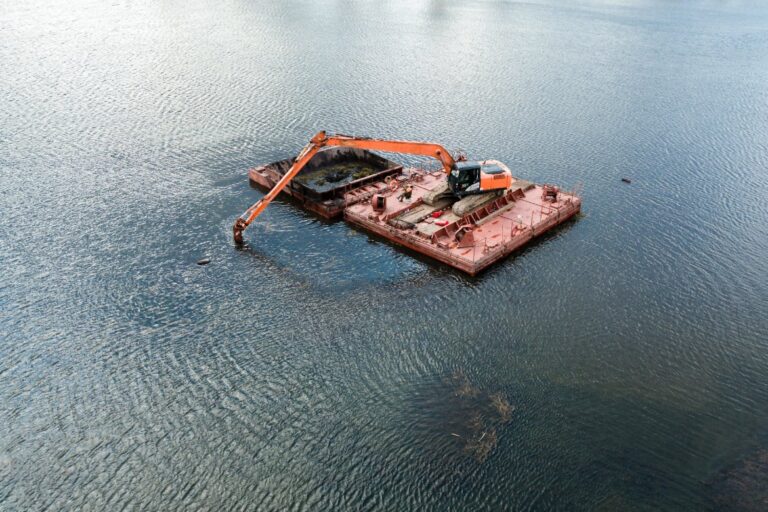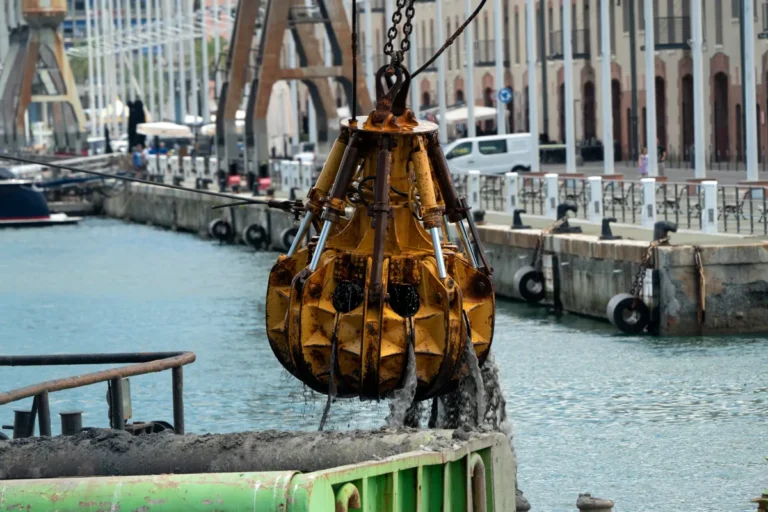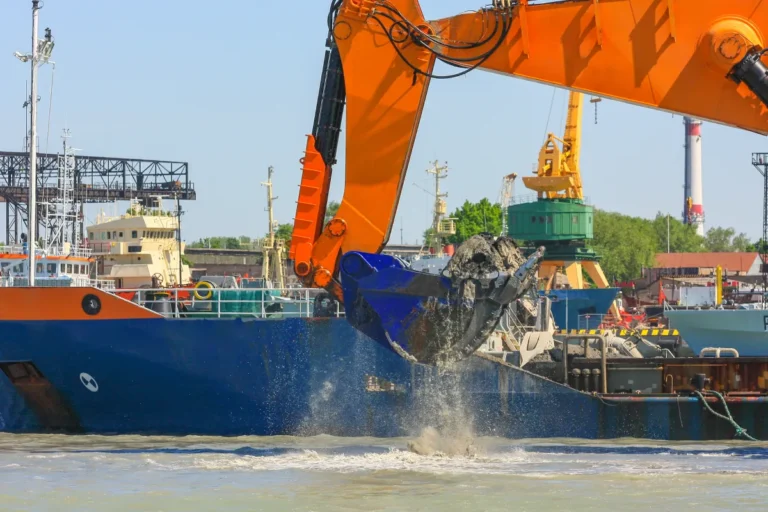Industrial dredging services are a critical process that supports the smooth functioning of wastewater treatment plants, mining operations, power facilities, and other industrial sites where sediment buildup can impact performance and compliance. By following a structured, step-by-step approach, from initial site assessments and environmental planning to equipment deployment, dredging execution, and long-term maintenance, industries can ensure efficient sediment removal and sustainable water management. This systematic process not only restores storage capacity and improves process flow but also extends the lifespan of infrastructure while maintaining alignment with environmental regulations.
Understanding Industrial Dredging
Industrial dredging is essential for maintaining process efficiency and compliance across sectors like mining, wastewater treatment, and power generation. It focuses on removing sludge, sediment, and solids buildup from ponds, lagoons, and containment basins to restore system capacity and prevent operational downtime.
Unlike large-scale maritime dredging used for ports or waterways, industrial dredging operates in confined environments with tailored equipment such as submersible pumps, cable-deployed dredges, or excavator-mounted systems. These compact solutions enable precise material removal where access and space are limited.
The main objectives, sediment removal, sludge management, and capacity restoration, directly support cleaner water flow, environmental compliance, and plant reliability. However, varying sediment types, restricted access, and potential contamination risks make every industrial dredging services unique, requiring careful planning and specialized execution to ensure consistent results and long-term system performance.
Phase 1: Pre-Project Planning and Feasibility Assessment
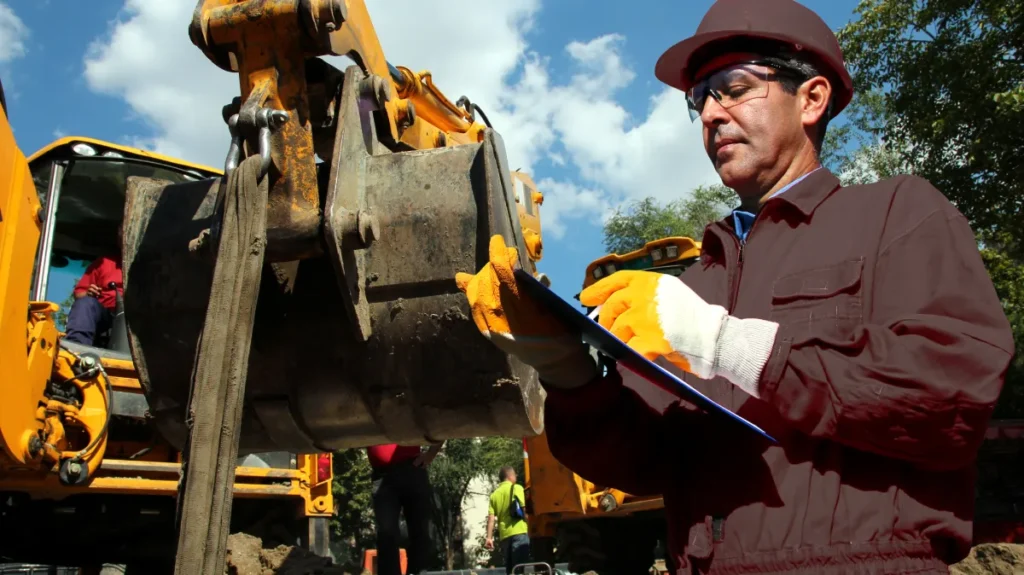
Every successful dredging project begins with thorough planning by industrial dredging services, followed by a feasibility phase. This stage ensures the project is technically sound, environmentally compliant, and optimized for cost and performance before any equipment is deployed.
Site Evaluation and Surveying
The first step is to understand the site conditions through detailed surveying and data collection. Bathymetric and sonar surveys help map sediment depth, volume, and bottom contours, providing an accurate picture of the material to be removed. Sediment sampling and laboratory testing determine the type, density, and presence of contaminants, which are critical factors in selecting the right dredging method and equipment. Access evaluation is equally important—teams must plan for safe equipment mobilization, power supply setup, and discharge routing, especially in confined industrial areas.
Regulatory and Environmental Considerations
Industrial dredging services must comply with federal, state, and local environmental standards. This includes securing permits under agencies such as the EPA and conducting Environmental Impact Assessments (EIA) when required. Proper handling and disposal of dredged materials—especially if contaminated—are central to project planning. Turbidity control measures, containment systems, and water quality monitoring plans are established early to minimize ecological disturbance and maintain compliance throughout dredging operations.
Defining Project Scope and Objectives
Once the technical and regulatory groundwork is complete, the project team defines clear operational goals—whether it’s restoring pond capacity, improving water flow, or removing hazardous sludge. Performance benchmarks, including expected flow rates, solids recovery targets, and turbidity thresholds, are established to measure success. A risk assessment identifies potential challenges, including sediment variability or weather disruptions, while contingency plans ensure that operations can continue smoothly under changing conditions.
Phase 2: Engineering Design and Equipment Selection
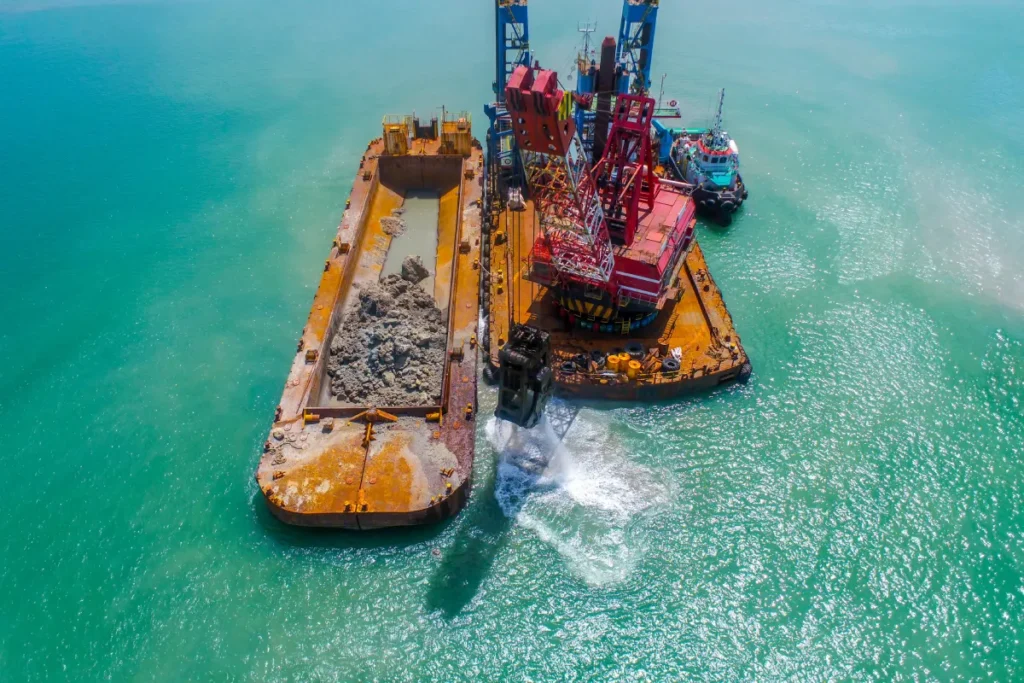
After the feasibility assessment, the engineering and design phase defines how the dredging operation will be executed. This step ensures that the selected dredging method, equipment, and monitoring systems align with the site conditions, production targets, and environmental requirements.
Choosing the Right Dredging Method
Selecting the appropriate dredging method is critical to achieving efficiency and precision. Hydraulic dredging is typically preferred for handling fine sediments, slurries, or continuous pumping operations, using submersible or suction pumps to transport material through pipelines. Mechanical dredging, on the other hand, is ideal for denser materials or when precise excavation is needed, often involving clamshells, excavators, or backhoes. The choice depends on multiple factors—sediment type, water depth, flow conditions, site accessibility, and the required production rate. A detailed assessment ensures that the chosen method minimizes downtime, energy use, and environmental disturbance.
Equipment Configuration
Once the method is determined, engineers configure the dredging system for optimal performance. Pump type and size selection are based on slurry density, head requirements, and available power sources. Electric-driven pumps offer low noise and emissions, suitable for continuous operations or environmentally sensitive areas. At the same time, diesel-hydraulic systems provide mobility and higher torque for remote or heavy-duty jobs. Supporting components such as power units, discharge pipelines, hose floats, and cutterheads are integrated to match site conditions. For confined or industrial ponds, compact submersible pumps or cable-deployed dredges are often chosen to maximize reach and precision without requiring large platforms.
Dredge Automation and Monitoring
Modern industrial dredging services increasingly relies on automation for accuracy and efficiency. GPS positioning, sonar mapping, and real-time flow sensors provide continuous feedback on dredge depth, slurry density, and pump performance. These systems allow operators to adjust parameters on the fly, maintaining consistent production and preventing equipment overload. Automated dredging controls also improve safety by reducing manual intervention and ensuring stable operation in complex environments.
Phase 3: Mobilization and Site Preparation
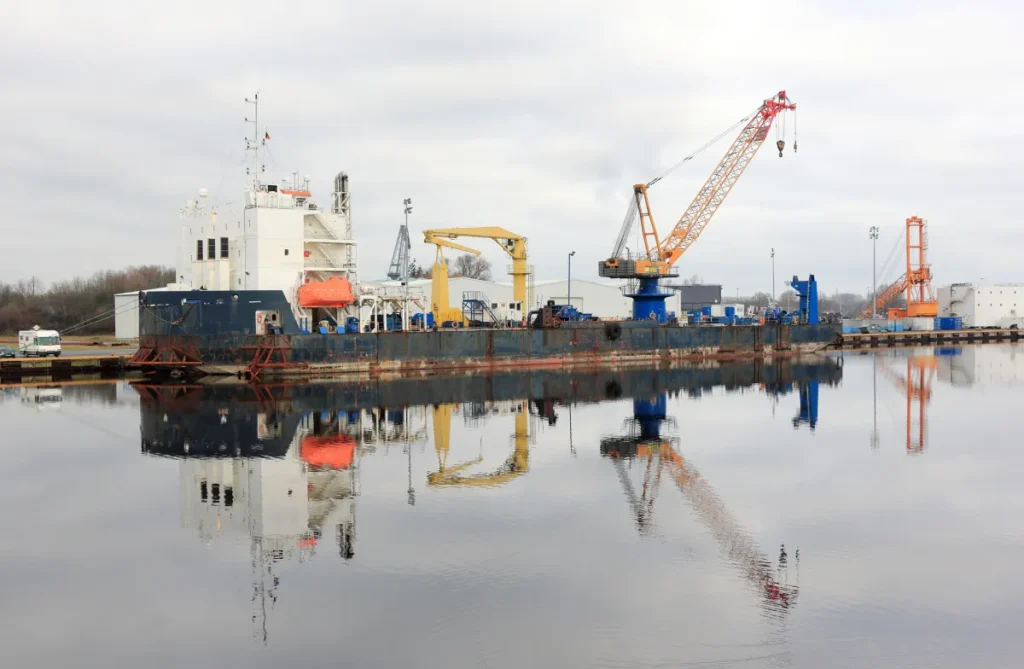
Before dredging begins, mobilization and site preparation ensure that all equipment, personnel, and safety measures are in place for smooth and efficient operations. This phase focuses on creating a controlled work environment, minimizing risk, and verifying that the dredging system is fully operational before full-scale deployment.
Site Clearance and Access Setup
The process starts with clearing and preparing the site to allow safe access for dredging equipment, support vehicles, and material handling systems. Access routes are established for power supply, fuel delivery, and discharge pipelines, especially in confined or industrial areas. The dredging area is inspected for obstacles such as debris, submerged structures, or vegetation that could interfere with equipment movement or slurry flow. In cases where dredging occurs in ponds or basins, staging areas are designated for pump deployment, control units, and dewatering setups.
Safety Checks, Operator Training, and Communication Systems
Safety is a critical aspect of mobilization. All personnel undergo site-specific safety orientation and equipment training to ensure proper handling of hydraulic systems, high-pressure lines, and electrical components. Emergency response plans are reviewed, and communication systems—such as radios or signal networks—are tested to maintain coordination between operators and supervisors during dredging. Equipment lockout procedures, spill kits, and first-aid stations are also verified before startup to meet regulatory and company safety standards.
Temporary Containment Structures or Floating Platforms Setup
Depending on site conditions, temporary containment systems or floating platforms may be installed to facilitate dredging operations. Floating pontoons, modular barges, or hose floats are positioned to stabilize equipment and maintain steady suction lines. Containment structures, such as silt curtains or floating barriers, are deployed to control turbidity and prevent suspended sediments from spreading beyond the work zone.
Equipment Calibration and Pre-Dredge Testing
Before full operation, all dredging equipment undergoes calibration and system testing. This includes verifying pump suction and discharge pressure, checking flow meters, and confirming the integrity of hydraulic and electrical connections. Test runs help fine-tune dredge positioning, suction depth, and pipeline flow rates, ensuring optimal efficiency and safety from the outset.
Phase 4: Dredging Operations and Material Handling
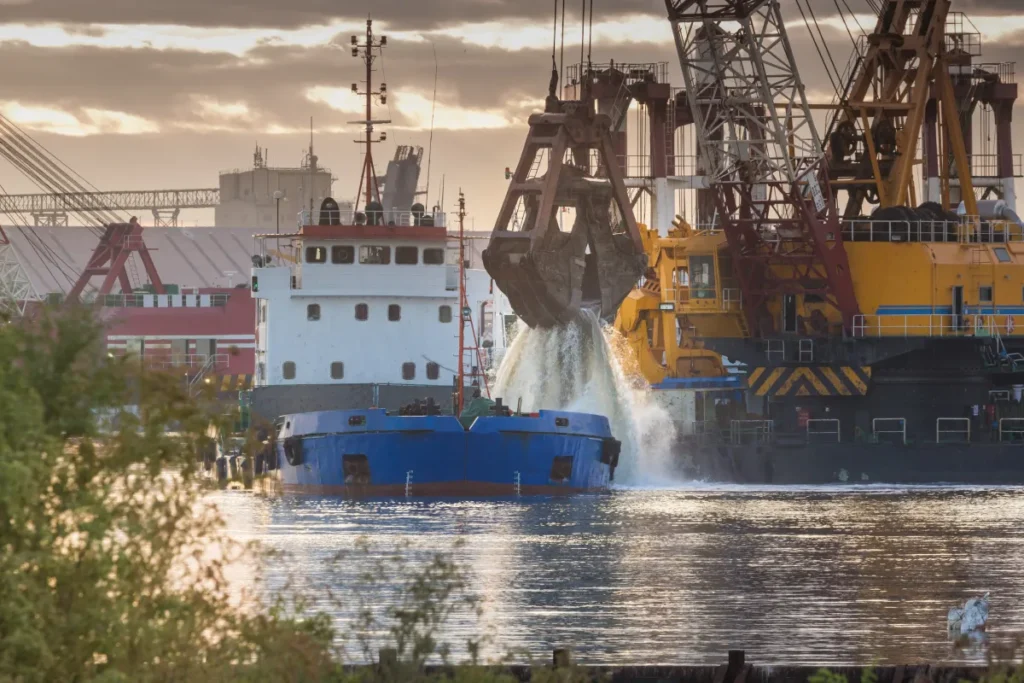
This phase represents the core of the industrial dredging services, where precise execution, controlled material handling, and real-time environmental monitoring determine the overall success of the project. Efficient coordination between operators, equipment, and monitoring systems ensures maximum productivity while maintaining compliance with environmental and safety standards.
Dredging Execution
During active dredging, operational parameters such as suction depth, flow rate, and production volume are continuously optimized to achieve targeted removal rates. Maintaining the correct suction depth prevents unnecessary water intake while ensuring consistent material recovery. Flow rate management and pump performance tracking help regulate slurry transport and prevent blockages or cavitation. Pipeline systems are monitored for pressure stability and wear, as these directly affect dredging efficiency and uptime. Because sediment characteristics often vary across the dredge area, operators adjust speed, pump pressure, and cutterhead settings to manage changing solids content while minimizing downtime and equipment stress.
Sediment Processing and Dewatering
Once the slurry reaches the discharge point, sediment processing and dewatering become critical for efficient handling and disposal. Depending on site logistics and regulatory requirements, dredged material may be processed on-site or transported to an off-site treatment facility. Common dewatering methods include geotextile tubes for large-volume containment, centrifuges for high-solids recovery, and filter presses for precise water separation. Each method is selected based on sediment type, space availability, and environmental constraints. Proper dewatering not only reduces waste volume but also ensures safer transport and compliant disposal of solids, especially in cases involving contaminated materials.
Environmental Monitoring During Operations
Environmental control is an ongoing process throughout dredging operations. Continuous monitoring of turbidity, dissolved oxygen, and pH levels helps verify that water quality remains within permissible limits. Automated sensors and data loggers track these parameters in real time, enabling quick adjustments if thresholds are exceeded. Spill prevention systems and containment barriers further reduce environmental risks, particularly in confined industrial lagoons or sensitive areas. This level of monitoring and responsiveness ensures regulatory compliance, operational transparency, and environmental protection—key factors for maintaining the credibility and sustainability of any industrial dredging services.
Phase 5: Post-Dredging Inspection and Quality Verification
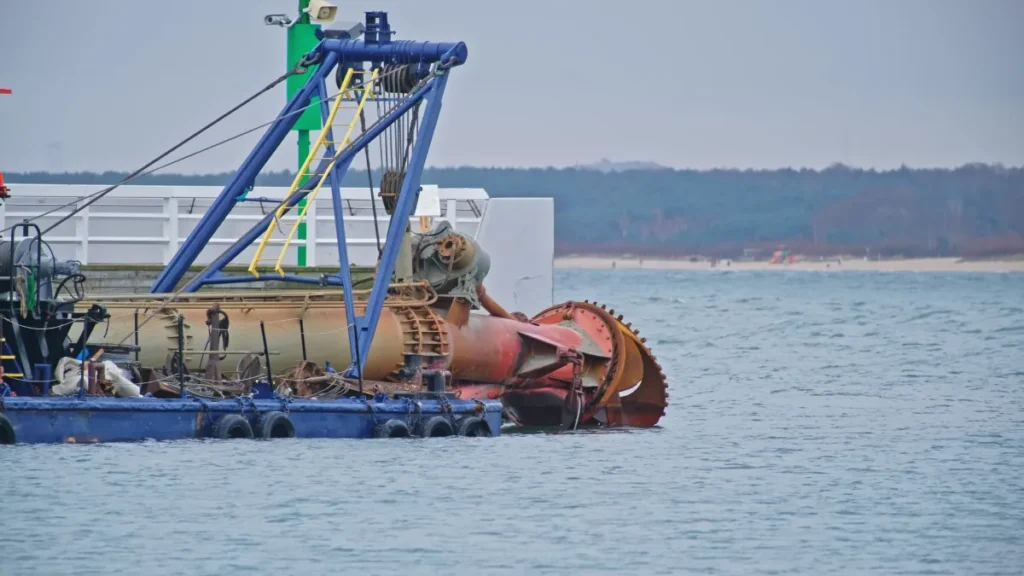
Once dredging operations are completed, a detailed inspection and verification by industrial dredging services ensures that project objectives have been achieved and environmental standards maintained. This phase provides measurable data to confirm the accuracy, efficiency, and compliance of the entire dredging effort.
Surveying Dredged Areas
Post-dredge surveys—typically using bathymetric, sonar, or drone-based mapping—are conducted to confirm that the required depths and volumes have been achieved. These surveys help identify any uneven dredging zones or areas requiring minor rework. Accurate survey data also supports transparent reporting for clients and regulatory bodies.
Sediment Sample Verification
Sediment samples are analyzed to confirm that the target materials have been effectively removed and to compare results with pre-dredge baseline data. This verification ensures that contamination levels, particle size, and moisture content align with project specifications and environmental requirements.
Final Turbidity and Water Quality Testing
Water quality testing is performed to assess parameters such as turbidity, suspended solids, and dissolved oxygen levels. These measurements confirm that dredging activities have not caused long-term water quality degradation and that the ecosystem has returned to acceptable conditions.
Documentation and Reporting
All operational data—including production logs, monitoring results, and quality assurance reports—are compiled into a comprehensive final report. This documentation serves as both a regulatory submission and a reference for future maintenance dredging, ensuring accountability and traceability throughout the project lifecycle.
Phase 6: Maintenance, Demobilization, and Site Restoration
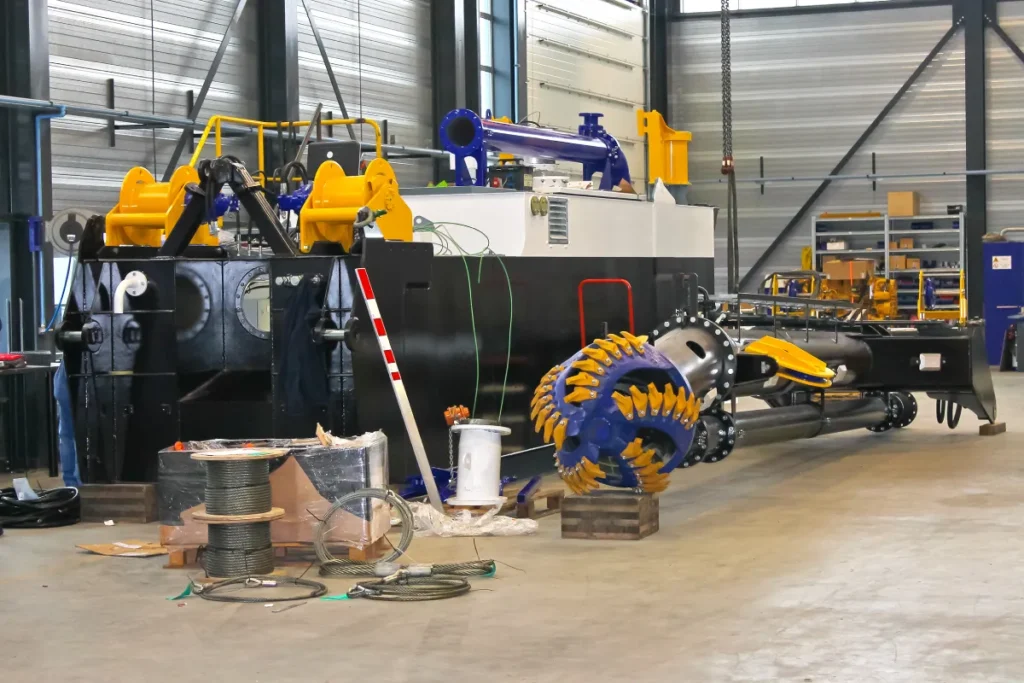
After project completion, systematic demobilization and maintenance activities by industrial dredging services ensure equipment integrity and environmental compliance while preparing the site for restored functionality.
Equipment Cleaning, Inspection, and Preventive Maintenance
All dredging and support equipment undergo thorough cleaning to remove residual slurry, followed by inspection for wear and damage. Preventive maintenance—such as seal replacement, lubrication, and calibration checks—extends the life of pumps, hoses, and hydraulic systems for future use.
Safe Demobilization of Systems
Pipelines, floats, power units, and other auxiliary systems are safely dismantled and removed from the site. Careful handling prevents contamination or spillage during transport and ensures the site remains stable after operations cease.
Site Rehabilitation and Sediment Disposal Verification
Once dredging equipment is cleared, the site undergoes rehabilitation, including grading, vegetation restoration, or structural stabilization as required. Verification of sediment disposal—whether at on-site containment areas or approved off-site facilities—ensures full compliance with disposal permits and environmental regulations.
Long-Term Sedimentation Monitoring and Maintenance Planning
Ongoing monitoring programs are often established to track sedimentation rates and water quality over time. These insights help schedule maintenance dredging at optimal intervals, preventing capacity loss and avoiding costly emergency interventions.
Long-Term Dredging Program Optimization
To maximize operational efficiency and sustainability, many industrial dredging services integrate dredging into a proactive, data-driven maintenance program. Predictive maintenance cycles are developed for ponds, lagoons, and basins using performance analytics and historical dredging data. Digital twins—virtual models of the dredging environment—allow engineers to simulate conditions and forecast sediment accumulation, helping plan future operations more accurately.
Modular equipment systems further optimize costs by enabling shared use across multiple sites or projects, reducing storage and mobilization expenses. Beyond efficiency, sustainable dredging programs aligned with ESG goals emphasize reduced emissions, minimal turbidity impact, and responsible material disposal.
By evolving from reactive maintenance to continuous optimization, industries can maintain water management systems that are not only efficient and compliant but also environmentally responsible for years to come.
Conclusion: Sustaining Efficiency Through Proactive Dredging Management
The success of any industrial dredging services depends on careful planning, precise execution, and ongoing maintenance that prevent recurring sedimentation issues. By investing in well-engineered dredging solutions and continuous monitoring, industries can reduce downtime, control costs, and ensure long-term operational stability. At Bayou Dredging, we specialize in delivering tailored dredging services designed to meet the unique challenges of industrial sites. Our team combines advanced technology, field expertise, and environmentally responsible practices to help clients maintain efficient, compliant, and sustainable water systems.
